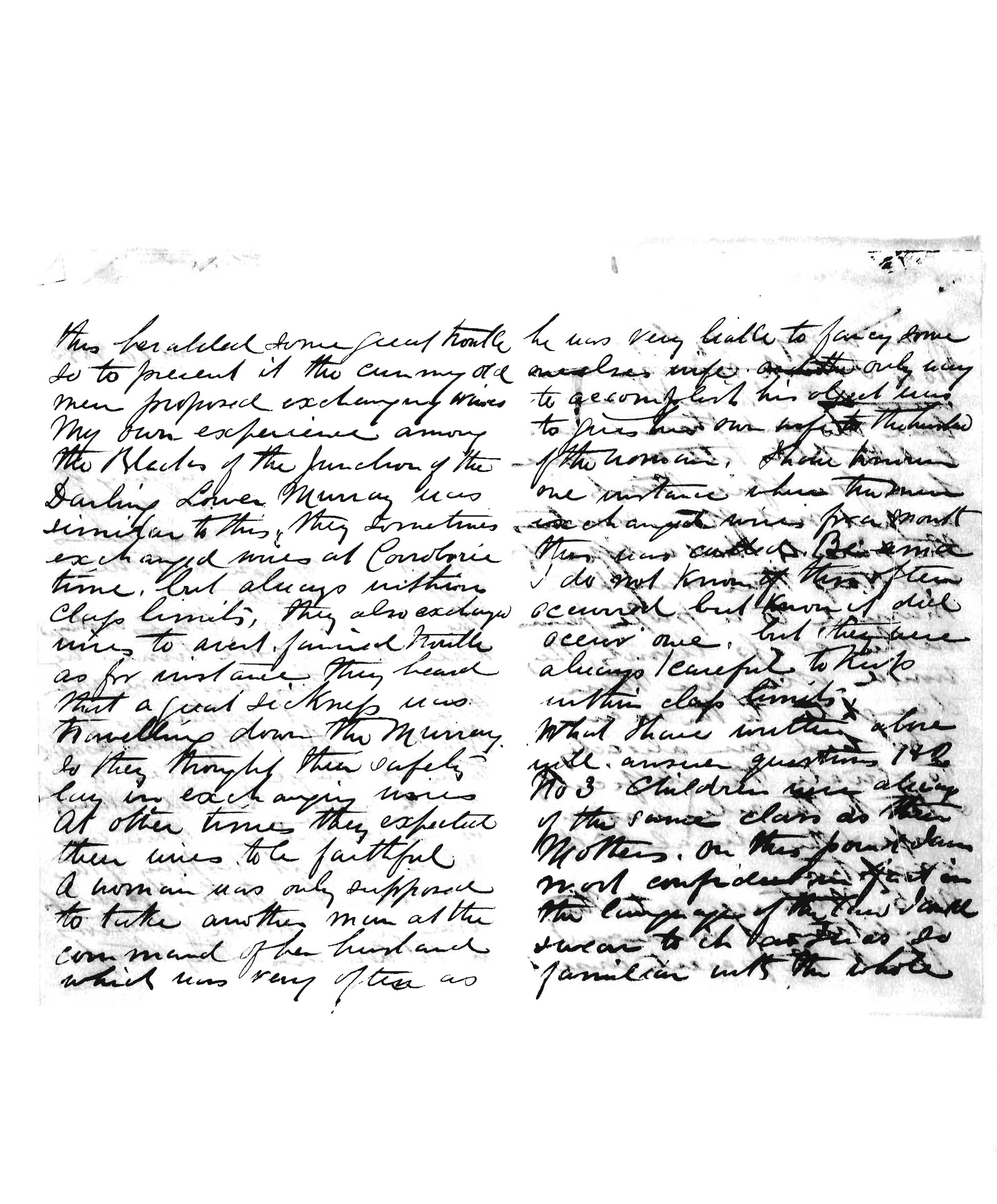Letter from Bulmer 20 April 1880

Transcription - Page 2
[ Left Column]
this heralded some great trouble.
So to prevent it to the cunning old
men proposed exchanging wives.
My own experience among
the Blacks of the junction of the
Darling Lower Murray was
similar to this, they sometimes
exchanged wives at Corroborie
time, but always within
class limits, they also exchanged
wives to avert fancied trouble
as for instance they heard
that a great sickness was
travelling down the Murray
so they though their safety
lay in exchanging wives.
At other times they expected
their wives to be faithful.
A woman was only supposed
to take another man at the
command of her husband
which was very often as
[Right Column]
he was very liable to fancy some
one else's wife. The only way
to accomplish his object was
to give his own wife to the husband
of the woman. I have known
one instance when the men
exchanged wives for a month
this was called Biama
I do not know if this often
occurred but know it did
occur once, but they were
always careful to keep
within class limits.
What I have written above
will answer questions 1 & 2.
No 3 Children were always
of the same class as their
Mothers. On this point I am
not confident in fact in
the languages of the law I can
swear to it as I was so
familiar with the whole
Document Details
